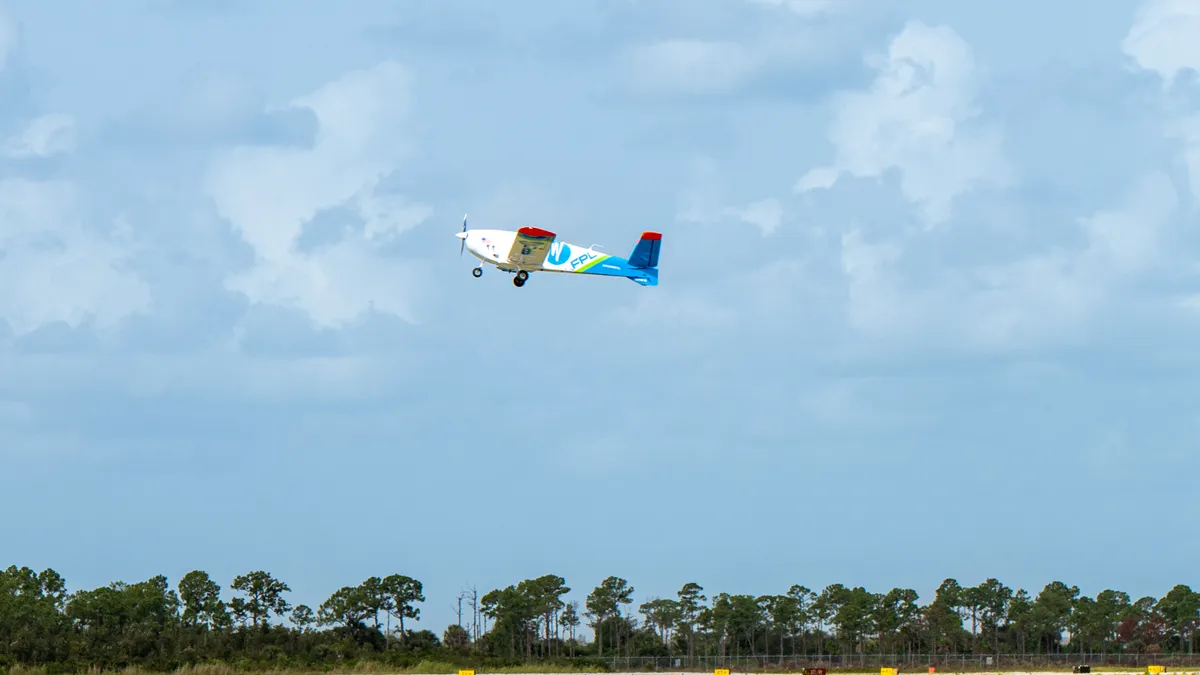Dive Brief:
- Florida Power & Light is testing a new fixed-wing, unmanned drone that it plans to use to capture images and videos of assets to aid power restoration following a storm. Four trained pilots will remotely control FPLAir One from a mobile command center, and data will be relayed in real time to identify issues and inform restoration crew deployments.
- The aircraft is the size of a small plane and can fly into tropical storm-force winds, according to the NextEra Energy utility. It can travel up to 1,000 miles in a single flight.
- FPLAir One is “on the verge of usability” and testing is almost finished, Marshall Hastings, FPL spokesperson, told Utility Dive this week. The utility expects to put the drone into operation by year’s end.
Dive Insight:
Utilities’ use of drones to inspect transmission lines and other infrastructure has expanded significantly in the last few years, following proposed federal rule changes in 2015. Drones reduce inspection time, labor, heavy equipment and costs and can fly over areas that are risky or difficult for humans to reach.
Most utilities rely on small, multi-rotor drones that have limited durability and range; FPL began using multi-rotor drones in 2016. Fixed-wing drones typically have a range 10-times longer than multi-rotor drones, they can fly at a higher altitude and they tend to fly faster. Fixed-wing drone batteries are more efficient and last up to twice as long as multi-rotor batteries.
FPL’s new plane-style drone extends its usual drone inspection range to allow a trip that spans from southern to northern Florida and back. The utility says it is the first business to commercially use a fixed-wing, unmanned drone apart from the Federal Aviation Administration’s research and development test site.
FPLAir One’s key feature is the ability to fly into storm-force winds to assess damage and spot potential issues before a storm ends or even before an outage occurs, according to FPL. This will speed the utility’s data gathering and restoration resource distribution.
“We expect it's going to be a massive bonus for our customers because it gives immediate visibility after storms," Hastings said.
Still, he says it’s too early to tell if this program will be expanded and whether FPL will invest in more fixed-wing drones.
The FAA’s rules for small, unmanned aircraft (Part 107) require that they remain within the line of sight — without devices like binoculars — of a visual observer. The rule limits some utility use cases for drones, but the FAA provides waivers on a case-by-case basis. In 2018, Xcel Energy became the first utility to receive an FAA waiver to operate drones beyond the line of sight.
FPL is in the final stages of working with the FAA on the necessary waivers to operate the drone commercially, according to Hastings. If a storm occurs prior to final approval, they will investigate the possibility of using FPLAir One for that instance.
FPL anticipates the drone will prove useful in everyday operations as well. For example, it is equipped with LiDAR technology that creates a digital twin of infrastructure on the ground and detects heat changes that could signal a potential equipment problem. It also can identify vegetation species and their health to inform decisions about pruning and maintenance.















